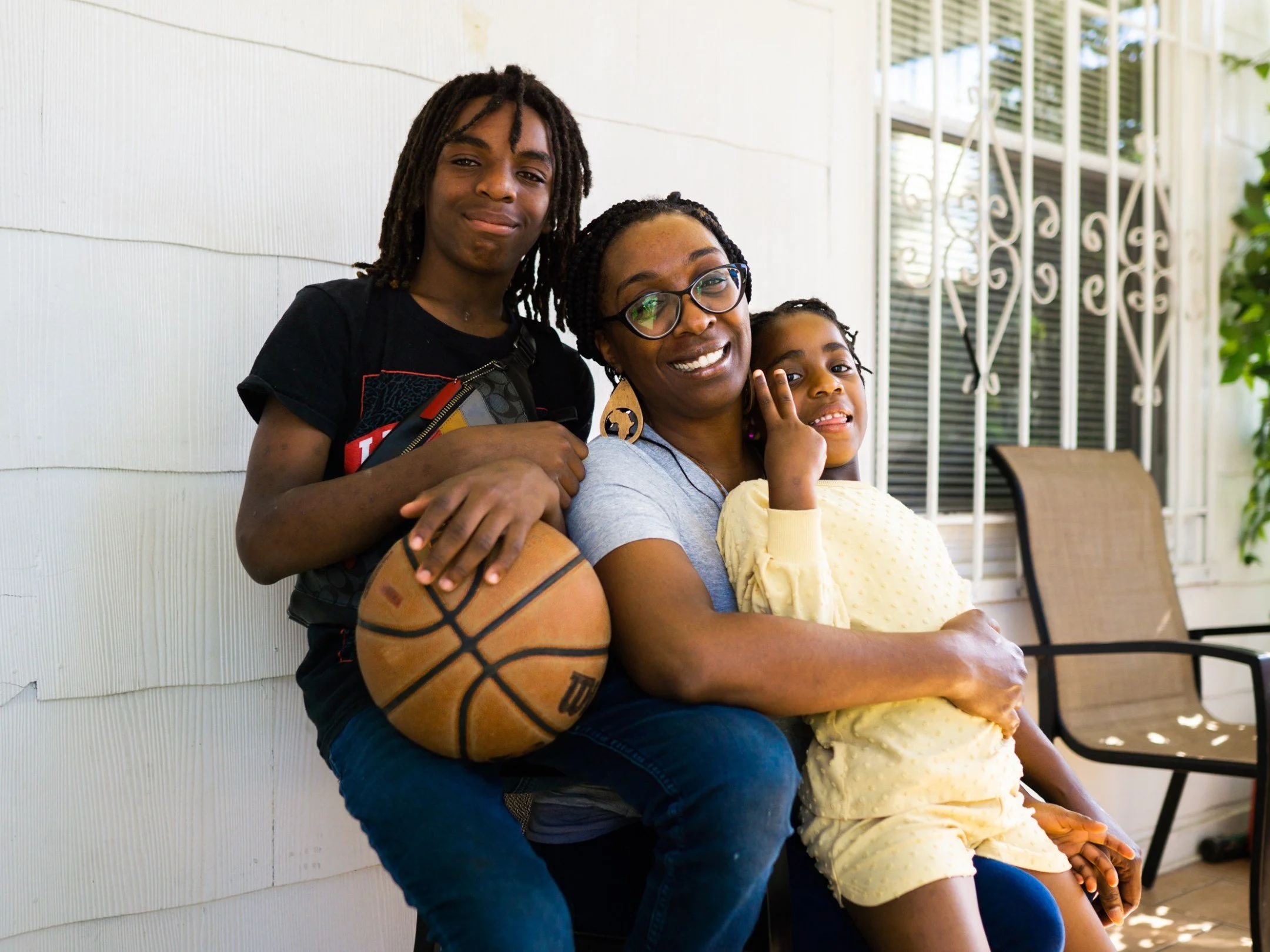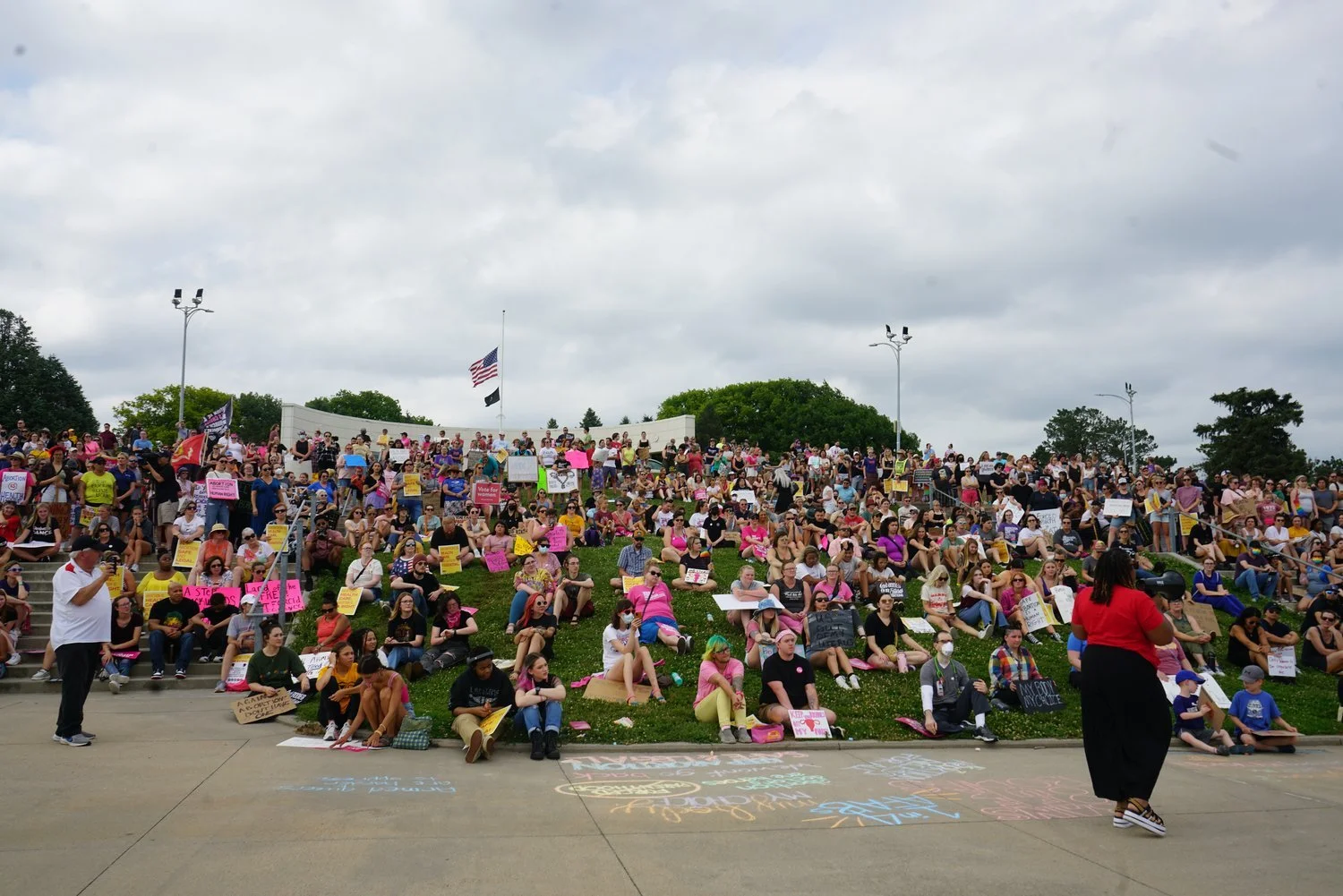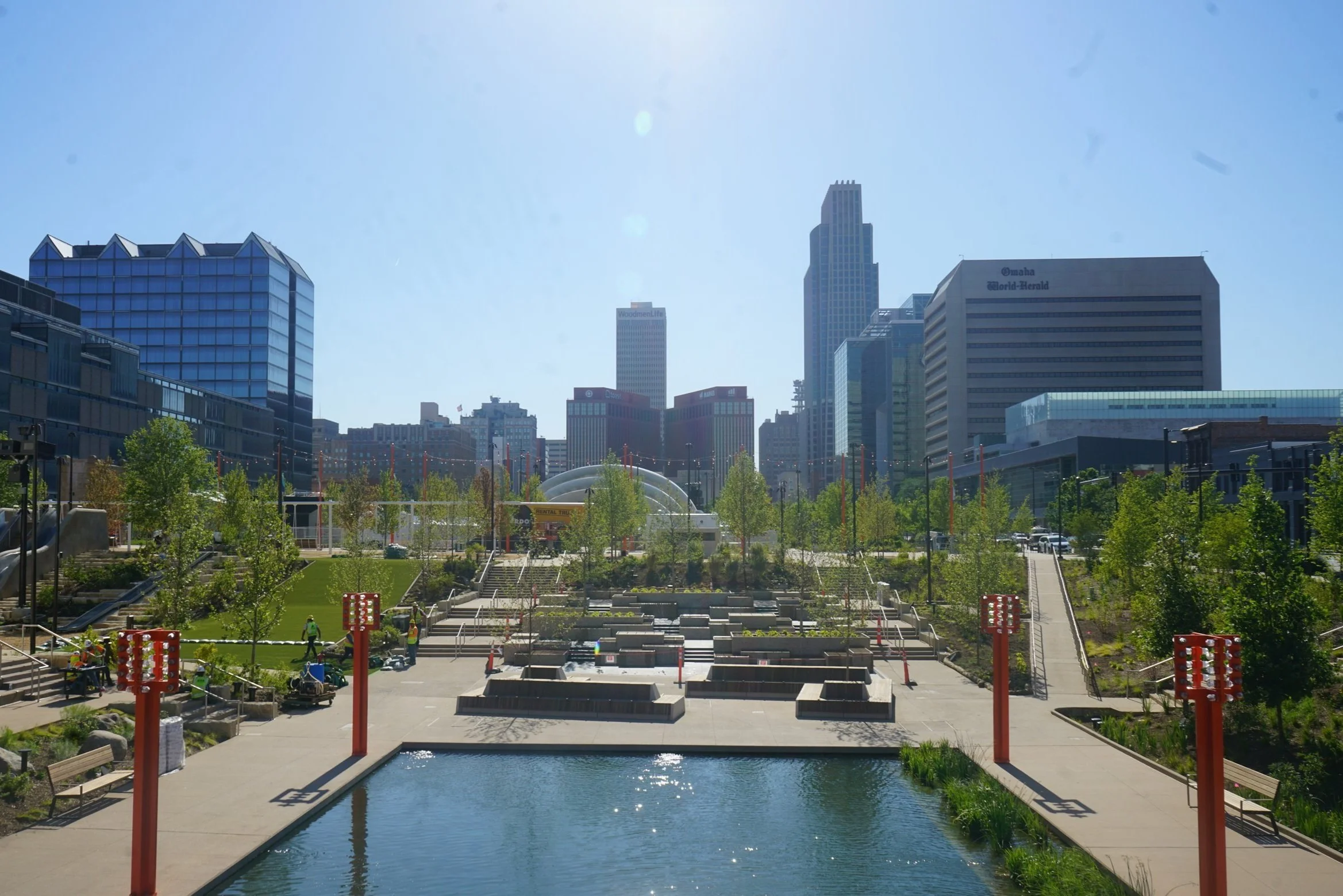North Omaha Station Could Be Burning Coal Until 2026 Instead of Stopping in 2023.
OPPD Director Eric Williams Wants to Hear What You Think About That on July 24 AT A PUBLIC MEETING IN MILLER PARK
Photo credit: OPPD
By Kietryn Zychal
This interview has been edited for clarity.
Eric Williams: On June 14th at the OPPD committee meeting there was a presentation from staff with a recommendation that the board consider extending the current operations at North Omaha Station through the end of 2026 (the estimated timeline). Essentially, until the two new gas facilities come online. And so that would mean maintaining burners one, two and three at North Omaha on gas operations and four and five would continue to burn coal.
The current plan, if no action is taken, the plan that has been approved by the board, is to convert burners four and five from coal to gas and fully decommission burners one, two and three.
And so, that would be a reduction in the overall capacity- megawatts of capacity- to generate energy that we have. And so the reason that this recommendation is made is that the new gas facilities need an interconnection agreement to the grid in order to come online. And the Southwest Power Pool has a huge number of new projects that are in the queue waiting to come online. When we began this process, OPPD staff had anticipated that the approval would be done in time for the [burners] to come online by the end of 2023 and we could finish the conversion of North Omaha after the two new facilities came online. Those new facilities are probably not expected until the end of 2026. But, actually there’s not 100% certainty about that. That is the issue that is being considered.
The best factual information, the best presentation is on OPPD’s website that was presented at the June 14 meeting.
We do not have board meetings in July. We anticipate that this will come up for discussion and a vote at the board meeting in August on the third Thursday, August 18, 2022.
The public can submit comments online. You can choose which board member you can send that to and which member of the executive leadership team.
Sunday, July 24th, I will be at the Miller Park Pavilion. And that will be from one o’clock to four o’clock. That was the closest publicly accessible facility to the North Omaha Station. It’s not available during the week, and so that’s the time that works best.
I think someone from OPPD staff will also be there, but as the director who represents North Omaha and Subdivision 6, I am making myself available to people who live in my district. It’s possible other directors might attend. This is not an official board meeting, this is Director Williams acting to hear from the people I represent in my own district.
NOISE: Now, if you had a message to give to the people you represent, because most people don’t follow these issues so closely and they don’t know what their options are, what would you like people to know are their options? What should they be communicating to OPPD?
Williams: Communicating mostly how they feel about the recommendation that’s presented. And so, I will say that this is a particularly complicated and technical issue. I described kind of a summary version of how the new gas facilities need to be connected through the Southwest Power Pool, and so there are many different facilities that are interacting here. This is level one of a five level kind of hierarchy. IAP2 (International Association for Public Participation) has a chart that describes increasing levels of engagement for constituencies and this is level one meaning that OPPD will provide information. Level five would be empower, you give people the direct responsibility to make the decision. That is the other end of the spectrum. In this case because of the technical nature, OPPD staff has recommended that we use the inform mechanisms meaning provide information to people, allow them to submit comments.
NOISE: Previously, we talked about things that you think OPPD could pay for and that’s what I’d like to inform people about.
Williams: So, the logistics of the vote, if we take no action, the current instructions from the board to our staff are to complete the refueling of North Omaha and decommission burners one, two and three by the end of 2023. If we take no action that is the default path that we are on currently. If that happens, there are likely negative consequences. So the reliability and resilience of the electric grid in our area could be threatened. Because some of the generation resources would go offline and that would lower some of the characteristics, technical parts of how the power grid stays online. And so outages might become more likely or they might last longer or they might have other negative consequences. If we take no action, the potential for those negative consequences increases a lot.
If we do take action, then staff will adjust the planning that OPPD has for continued operation of North Omaha through the end of 2026, expected timeline, or until the new gas facilities come online, at which time we can turn off burners one, two and three and refuel burner four and five.
I said this in the World Herald. I am disappointed. I consider these to be two “not-great” options.
I said this in the World Herald. I am disappointed. I consider these to be two “not-great” options.
Eric Williams, OPPD board director, Subdivision 6
NOISE: Why is this happening? Why are they not able to meet the schedule?
Williams: Because of the anticipated timeline for the approval to bring the new facilities online, Southwest Power Pool (SPP), the external agency has said, “We will not be able to provide you with that approval on the timeline that OPPD had anticipated.” It used to be that you could submit a new generation connection request and it would be done– it’s a very complicated process, plants cost hundreds of millions of dollars, and so it would take something like two and a half years to get that review process done. Now it is estimated to take more like four and a half to five years from the time that you originally submit a request to bring a new facility online to when that facility will be operational.
NOISE: That’s two extra years. Why do you think it’s taking so much longer?
Williams: Most of the new generation that is being submitted to come online in the SPP and across the entire country are renewable projects, solar and wind and battery storage and some small amount of gas. Solar and wind are a vast majority of the new projects that are submitted. Those projects are relatively preliminary when they are submitted and so there are developers who have submitted kind of speculative projects that they don’t really have really clear details on where exactly the project will be located or the size of the project. They might not own the land rights, they just kind of have an idea of a project. But, in order to submit that project, they didn’t have to make any kind of financial investment. They didn’t have to pay SPP anything and so developers took this signal to say, “Great! Just submit tons of projects, all over the place and find out which one is analyzed to be the least expensive to construct, throw away all the others and build the cheap one.” And that process has led to a ridiculous amount of new generation requests. Something like 80% of which are anticipated to never be built.
NOISE: So, your proposal which is feasible and likely is now being kicked back because of a bunch of not-necessarily feasible, likely projects?
Williams: That’s a pretty good summary, yes. And ours is not just feasible and likely…
NOISE: That makes sustainable energy people look like a problem.
Williams: It’s not necessarily the clean energy people, but the incentives for developers. This process worked fine for the last several decades when the mechanisms for new projects coming onto the electric grid were largely centralized coal facilities, or maybe a gas facility or nuclear facility and each utility might build one every 10 or 15 years. And so, SPP’s process of: submit your project, we will review it and let you know how much it will cost to connect, worked just fine when just a few projects were submitted in a year. They were very large, they were very centralized, they were very well understood by the utilities that were submitting them. Over the last five or 10 years, private energy project developers have taken the market signals of “It costs you nothing to submit a project to SPP. Why not just submit tons and tons of projects?” SPP’s process did not send a signal of: Don’t give us lots of very speculative, low-probability projects. And so, this is just an example of where clean energy technology has gotten very, very cheap. And developers are listening to the broader market signals of: customers want clean energy. And they are trying to bring those projects online but they are doing it in a way that is not particularly well designed.
And I would say that the major situation here is unintended consequences from renewable energy being very inexpensive and policies not being updated fast enough for the clean energy transition that is occurring.
NOISE: Well, obviously, Southwest Power Pool needs to hire more people to do this [analyzing projects].
Williams: I agree. And they have already taken steps. They have asked for a down payment toward the cost to connect your project to the grid upfront. And there are some requirements for more demonstrated control of the land rights and other parts of the project. And so SPP has taken steps to say, “Don’t send us all these highly speculative projects. You need to be further along… We can’t just be analyzing all these thousands of megawatts of new generation. That’s not how SPP is designed to operate.” And so they have already taken steps. But, there are years of backlog that they now need to work through.
NOISE: OK, what’s on the public’s wishlist? People can say, “I don’t approve of this and here’s what I want. You’re taking clean air from me for three more years. And here’s what I’d like instead.” And how are we going to pay for it?
Williams: OPPD has the long term goal of net-zero by 2050. The refueling of North Omaha would be a very big step to reducing carbon emissions. Something like 30% of all of our carbon emissions would be reduced when we complete the conversion of North Omaha four and five.
The recommendation to delay that conversion does mean there would be more emissions from 2024, 2025, 2026 until that conversion is completed. But that doesn’t mean that we can’t take other small steps toward that long term goal. And that is something I am strongly supportive of.
I might have said it in the beginning but I want to clarify, anything I express as an opinion are just my own feelings. It does not represent an official position of the organization nor any of the other board members. It’s very important to clarify that— because we have some guidance policies about how individual directors speak on issues.
I can express my own opinions.
I would like to see us focus on distributed generation, meaning solar on homes and businesses. And maybe even battery storage on homes and businesses. Those are much smaller projects. They are much less expensive to deploy individually. And they interact with the electric grid in a slightly different way. But, they can collectively have a big benefit toward our long-term decarbonization. I would suggest that OPPD demonstrate a commitment to moving forward with solar on homes and businesses and encouraging people to get storage. And just send a signal to our customers that even though this recommendation is to continue the existing coal operations, and that would have additional emissions from North Omaha, there are other things we can do as a good faith demonstration that we are going to a net-zero decarbonized utility of the future. Here are some other steps. And I hope the board and the executives work together to find other ways that we can move forward on these small steps even though we can’t make this big step right now.
“I would like to see us focus on distributed generation, meaning solar on homes and businesses.”
NOISE: What can I, as a homeowner, ask for? OPPD– would you put some solar panels on my roof and pay for it?
Williams: We don’t currently do that.
NOISE: You don’t?
Williams: We do not. We allow people to do that but OPPD doesn’t provide any money toward those projects. Lincoln Electric System does provide some incentives for people to put solar on their homes or businesses. And many other utilities across the country do the same. That is something OPPD could decide we would like to do and I have suggested several times since I joined the board three and a half years ago that that is something I would like to see us move forward on.
NOISE: And Lincoln is already doing this?
Williams: They have been for several years. I want to say seven years.
NOISE: If Lincoln is doing it, why isn’t Omaha doing it?
Williams: I agree. I think that is good logic. If Lincoln can do this, I think Omaha should be able to do it.
[Williams later explained that OPPD would not pay for the entire cost of solar installation. On a $12,000 installation, for instance, OPPD might pay about 20 percent of the cost.]
NOISE: But, what’s the inside skinny on that? Why isn’t OPPD already [subsidizing solar]?
Williams: I’m not totally clear on that. [The answer is probably] that OPPD is a slightly different structure of utility. We own a lot more of our generation. Lincoln buys a lot more of their generation from other places. They have more incentive for customers to have solar because they would otherwise buy it from the grid, essentially, and they don’t have the same challenges of, say, for OPPD, if we bring on some solar and storage and we suddenly need to use less energy, you can’t really turn off a coal plant. It doesn’t come in steps. It’s either on or it’s off. You can’t turn down the dial. It’s either on or off. The economics for us are more challenging. If we reduce the consumption a little bit, we still can’t accelerate the transition of any of our large facilities.
So, that’s one example.
Another thing that OPPD could do is [this]: We could adjust the way we operate the North Omaha facility, particularly in the spring and fall. We could choose to operate the facility less frequently. There are more technical definitions of that but I think that’s the easiest way to describe that. And that would reduce the emissions because it would be “not running.”
That would mean we would need to get power from other places, but that is something we can do. We might have our facility off, and we could buy power from other locations on the grid which might actually be cleaner than running our own coal facility.
Image credit: OPPD
NOISE: What do you say about the fact that low income customers might not be able to afford to put solar panels on their homes?
Williams: I do recognize that there is a very serious climate and energy justice concern when you say the answer is, “Just put solar on your house.” And lower and moderate income households, people who don’t own their own home, people who live in apartments, who cannot physically put solar on their home, that product doesn’t help them. We have other things in process that will also help them economically. We have a customer assistance program, the pilot has just started now. That is a credit on the bill for income qualified customers to help reduce their energy costs. And that program is in the process of rolling out right now. I will probably talk quite a bit about that program on July 24th. CAP is the abbreviation we use.
From OPPD’s own reporting on rates and the rate structure and how it impacts people differently, we know that a very serious percentage of the energy assistance program payments go to people who live in North Omaha. And so we know that there is a very focused amount of economic assistance-need toward energy bills in the area near North Omaha Station.
And I have talked about this for the past few years when we talk about rate structures and the economics of how people feel the impacts of energy burden. This is a very good program that we will talk about in July that will be beneficial to people in North Omaha that I represent. It’s in a pilot phase right now and I will be encouraging staff to provide information so people can find out about that economic program, and that is separate from the environmental components.
More information is available on WilliamsForOPPD on Facebook.
Meet with OPPD Director Eric Williams on Sunday, July 24, 2022 at Miller Park Pavilion from 1 - 4 p.m.
















